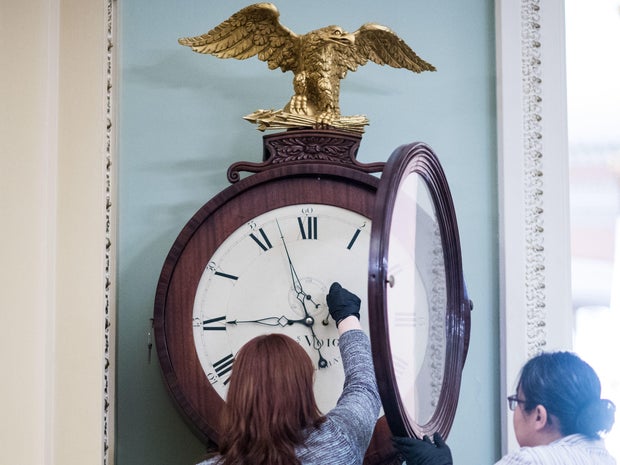Daylight saving time returns to the U.S. on Sunday and is scheduled to end in early November as usual — unless Congress decides it’s time for a change. A proposal to end the decades-old practice of making Americans change their clocks twice a year passed the Senate by unanimous consent last year but wasn’t voted on in the House, meaning the legislation must start over in the new Congress.
Under the measure, daylight saving time would have been made permanent, and if the bill was signed into law, most Americans would have shifted their clocks one hour forward Sunday and left them that way. As it stands now, those clocks will need to be shifted back an hour on the first Sunday of November, when standard time resumes.
A CBS News/YouGov poll last year found nearly 80% of Americans supported changing the current system. The idea of permanently shifting an hour of daylight from the morning to the evening appealed to 46% of Americans while 33% wanted the clock to run out on daylight saving time.
More daylight in the evening hours allows for people to be more active outside later in the day. However, “springing forward” can deprive people of an hour of sleep, and some parents want to let the sun set on daylight saving time, keeping the same number of daylight hours in the morning so children aren’t heading to school in the dark.
House lawmakers couldn’t decide last year whether to keep daylight savings year-round or abandon it altogether and stick to standard time, according to a November statement from Congressman Frank Pallone, the New Jersey Democrat who was then chair of the Energy and Commerce Committee.
“We don’t want to make a hasty change and then have it reversed several years later after public opinion turns against it — which is exactly what happened in the early 1970s,” Pallone said.
The last time daylight saving time was changed was in 2007, when new rules took effect to extend it by about a month in the hopes of reducing energy consumption, according to the National Institute of Standards and Technology. For now, daylight saving time lasts 238 days a year.
Bill Clark/CQ-Roll Call Inc. via Getty Images
Sen. Marco Rubio, the Florida Republican who sponsored the bill that the Senate passed last year, has introduced a new version for the chamber to consider. “This ritual of changing time twice a year is stupid,” Rubio said in a statement last week.
Florida’s other Republican senator, Rick Scott, and some of their colleagues in the GOP — Sens. Bill Hagerty of Tennessee, Cindy Hyde-Smith of Mississippi, James Lankford of Oklahoma, Rand Paul of Kentucky and Tommy Tuberville of Alabama — have backed the bill.
So have some Democrats, who hold a slim majority in the Senate. Sens. Martin Heinrich of New Mexico, Ed Markey of Massachusetts, Alex Padilla of California, Tina Smith of Minnesota and Ron Wyden of Oregon support the bill, with Wyden calling for “a stop to the twice-a-year time-change madness.”
Another Florida Republican, Congressman Vern Buchanan, has introduced a companion bill in the House, where the GOP gained control in the midterm elections. Buchanan called the biannual time change “inconvenient,” “entirely unnecessary” and an “antiquated practice.”
Daylight saving time isn’t observed in Hawaii, most of Arizona and the territories of American Samoa, Guam, the Northern Mariana Islands, Puerto Rico and the U.S. Virgin Islands. The bill would allow them to remain exempt.
